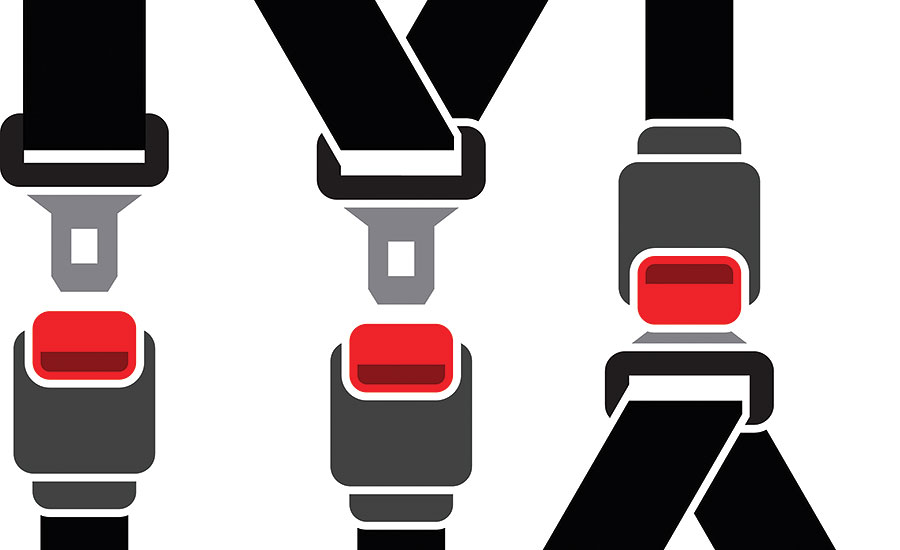Road safety culture can be complacent
Is everyone buckled up?

In these days and times, knowing what we know, having heard all the public service announcements about seat belts, having learned all about it at school, with most cars buzzing or beeping until the seat belt is fastened, why on earth would anyone choose to drive or ride without the obvious and easy protection that safety belts provide?
Current data for my state (North Carolina) show that in 2017 there were around 1,400 traffic fatalities. Non-fatal injuries are estimated to be as much as 100 times that. About 350 of the roughly 1,400 fatalities were pedestrians, bicyclists, or motorcyclists, so safety belts were not an option for them. Of the roughly 1,050 fatalities of drivers and passengers, more than 40% were not buckled up. Side-by-side with such statistics, the data show that in NC overall safety belt use is estimated at around 91% (that may be a low estimate for drivers and front-seat occupants; other data suggest that back seat use may be as low as 70%). But the 9% or so who do not obey the law and use their restraints contribute disproportionately to traffic fatalities.
Peculiar laws
In doing research for this column, I found a number of peculiarities in safety belt laws. My state of North Carolina grants numerous exemptions from the law. Quoting verbatim from the NCDOT:
“Vehicles not required to have belts:
- In general, these are cars made before 1968 and light trucks and vans made before 1972.
- Professionally certified medical condition or mental phobia preventing use.
- Rural letter carriers and newspaper carriers while performing duties.
- A driver or passenger frequently stopping and leaving the vehicle or delivering property from the vehicle if the speed of the vehicle between stops does not exceed 20 miles per hour.
- Vehicles with “Farm” or “Commercial” license plates while being used for agricultural purposes.”
“Odd and not safe”
I must comment on point #3 above. My neighborhood, while annexed to be a part of the town of Davidson, is not in the heart of our downtown area. It is a development, a couple of miles from town center, down a rural two-lane road. Our mail deliverers use their own vehicles, and do not wear safety belts. They drive from the passenger seat (I am not making this up), unbuckled. I suppose that some controlling legal authority has decided that it is safer for them to drive from the right seat and stuff mailboxes from the right side of the road, rather than to stay in the driver’s seat (belted) and pull over to the wrong side of the road to stuff mailboxes. But as a safety guy, it still strikes me as odd and not safe.
School buses exempted
NCDOT exemptions do not mention school buses (or any buses). Most states in the U.S. do not require safety belt use on full-sized school buses (currently 42 do not, while 8 do), and most school buses (including the vast majority of those in NC) do not have such safety belts at all.
So, children are appropriately indoctrinated in the legally mandated use of safety restraints in their parents’ cars and trucks, but the one vehicle in which they cannot use a safety belt is the big yellow “can of kids” that takes them to and from school five days per week, nine months per year.
I have heard the argument that school bus travel is safe, in that the buses are big and sturdy, designed differently than cars (“like giant egg cartons” to protect the kids), and after all, very few fatalities occur (around six per year). Plus, it would be very expensive to retro-fit school buses. Cost-benefit would argue against it.
OK, points taken. But of those few fatalities, how many would have been prevented by safety belts? And what if we look at non-fatal injuries? In NC alone, in 2016 there were 939 school bus crashes in the state, resulting in 296 injuries. The debate on safety belts in school buses continues.
Revive public service announcements
But as I suggested earlier, back in the day there were lots of public service announcements on radio and TV encouraging safety belt use. Today, not so much. We seem to accept it as “normal” that upwards of 40,000 people die on our roads every year, and a large percentage of the victims were not using safety belts. I see occasional “click it or ticket” billboards. Plus, most vehicles now have air bags.
But still, way too many people drive or ride unrestrained, and they are disproportionately represented in a group that no one wants to be part of, namely, fatal crash victims. The public service campaigns have done much good. So have the laws. Before the NC laws were enacted, safety belt use was estimated at 12-15% statewide. But while much higher now, safety belt use is still not 100%, despite the abundant evidence of the benefits of their use, and despite being required by law. Maybe it’s time for those campaigns to be revived.
Issues other than traffic safety have become “hot.” Especially visible today is the problem of the opioid epidemic, and more generally drug overdose deaths (more than 70,000 annually, with more than 47,000 of those deaths being opioid-related). The media attention paid to the opioid epidemic is well deserved.
Looking for a reprint of this article?
From high-res PDFs to custom plaques, order your copy today!






